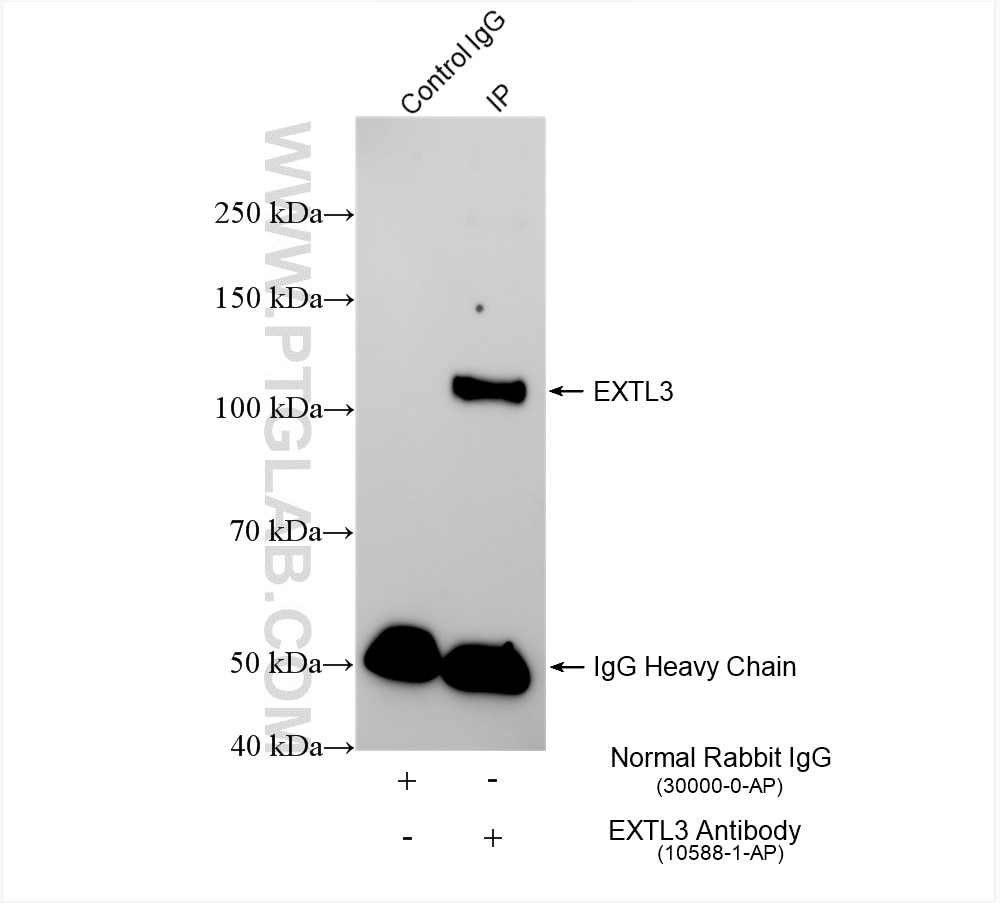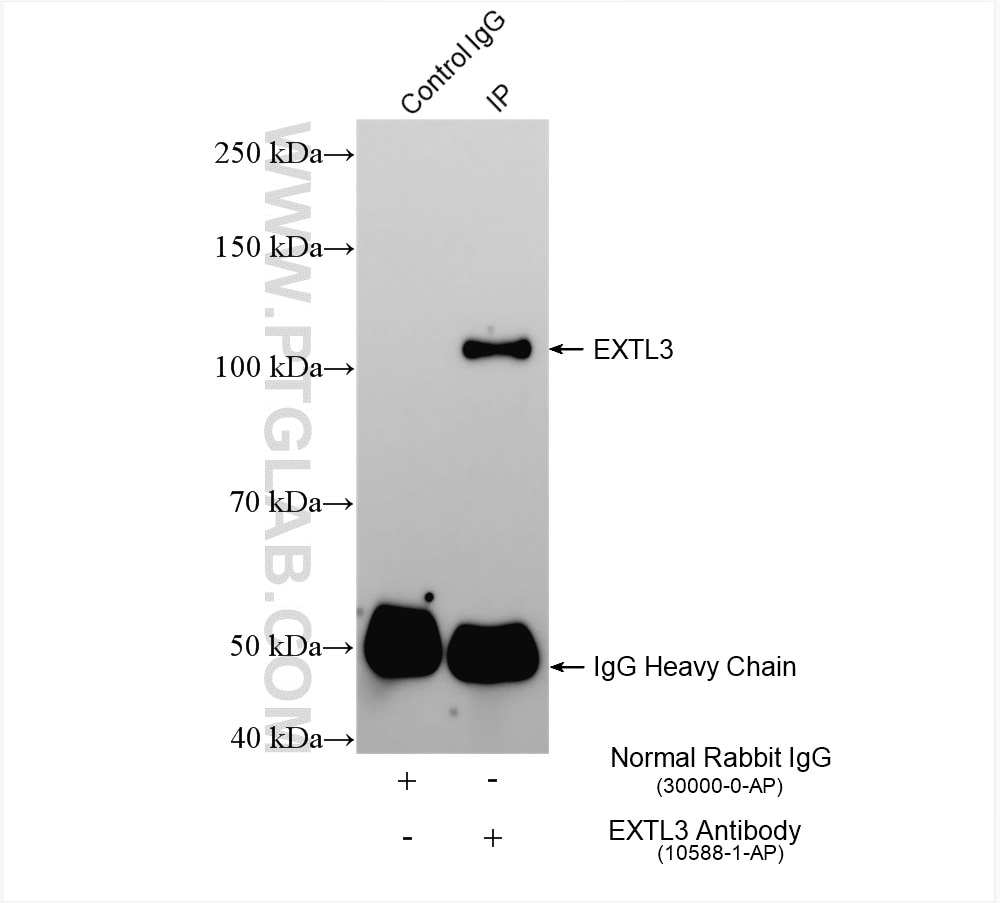Anticorps Polyclonal de lapin anti-EXTL3
EXTL3 Polyclonal Antibody for IP, ELISA
Hôte / Isotype
Lapin / IgG
Réactivité testée
Humain, souris
Applications
WB, IF, IP, ELISA
Conjugaison
Non conjugué
N° de cat : 10588-1-AP
Synonymes
Galerie de données de validation
Applications testées
| Résultats positifs en IP | cellules HEK-293T, tissu pancréatique de souris |
Dilution recommandée
| Application | Dilution |
|---|---|
| Immunoprécipitation (IP) | IP : 0.5-4.0 ug for 1.0-3.0 mg of total protein lysate |
| It is recommended that this reagent should be titrated in each testing system to obtain optimal results. | |
| Sample-dependent, check data in validation data gallery | |
Applications publiées
| WB | See 2 publications below |
| IF | See 2 publications below |
Informations sur le produit
10588-1-AP cible EXTL3 dans les applications de WB, IF, IP, ELISA et montre une réactivité avec des échantillons Humain, souris
| Réactivité | Humain, souris |
| Réactivité citée | Humain, souris |
| Hôte / Isotype | Lapin / IgG |
| Clonalité | Polyclonal |
| Type | Anticorps |
| Immunogène | EXTL3 Protéine recombinante Ag0936 |
| Nom complet | exostoses (multiple)-like 3 |
| Masse moléculaire calculée | 105 kDa |
| Poids moléculaire observé | 105 kDa |
| Numéro d’acquisition GenBank | BC006363 |
| Symbole du gène | EXTL3 |
| Identification du gène (NCBI) | 2137 |
| Conjugaison | Non conjugué |
| Forme | Liquide |
| Méthode de purification | Purification par affinité contre l'antigène |
| Tampon de stockage | PBS with 0.02% sodium azide and 50% glycerol |
| Conditions de stockage | Stocker à -20°C. Stable pendant un an après l'expédition. L'aliquotage n'est pas nécessaire pour le stockage à -20oC Les 20ul contiennent 0,1% de BSA. |
Informations générales
Exostosin like glycosyltransferase 3 (EXTL3), also known as RPR, is located at chromosome 8p21.1 and composed of 919 amino acids, making it the longest member of the EXT family (PMID: 35676258). EXTL3 encodes the glycosyltransferases responsible for the biosynthesis of the backbone structure of heparan sulfate (HS) (PMID: 24128412). EXTL3 has been identified as a receptor molecule for regenerating islet-derived (REG) protein ligands, which have been shown to stimulate islet β-cell growth. Mutations in EXTL3 could lead to skeletal dysplasia, developmental delay, and severe immune deficiency (PMID: 28148688). The predicted molecular weight is 105 kDa, but we detected the band at 65 kDa perhaps due to alternative splicing (PMID: 14618397).
Protocole
| Product Specific Protocols | |
|---|---|
| IP protocol for EXTL3 antibody 10588-1-AP | Download protocol |
| Standard Protocols | |
|---|---|
| Click here to view our Standard Protocols |
Publications
| Species | Application | Title |
|---|---|---|



